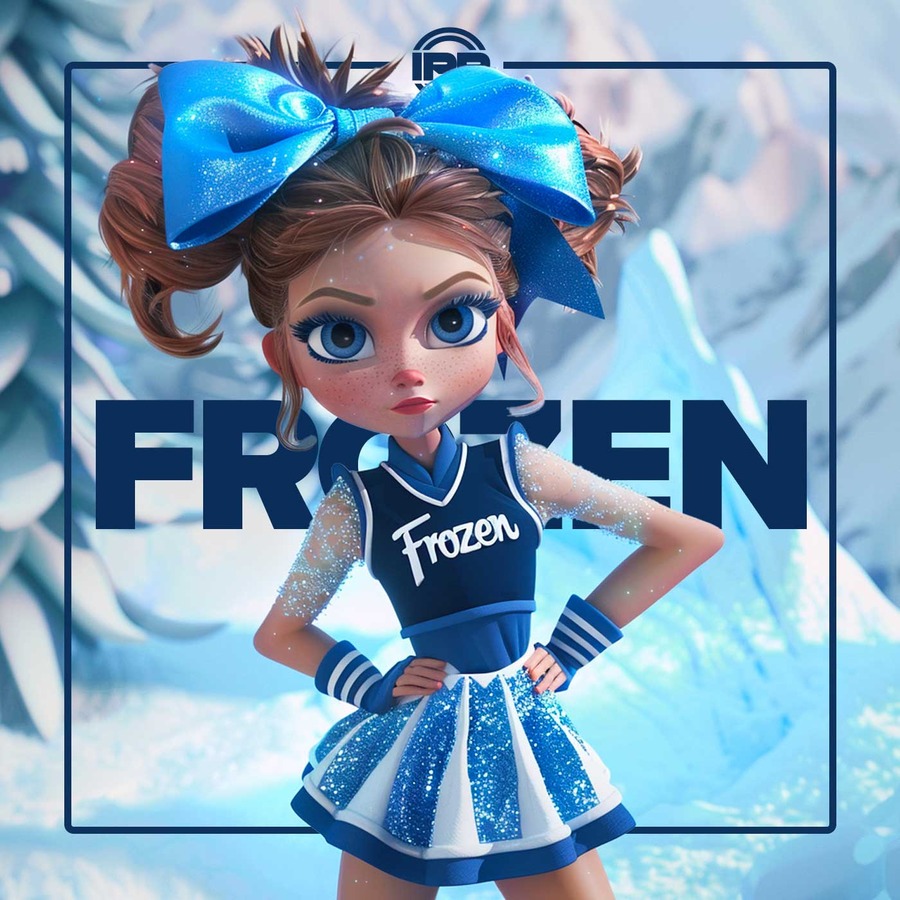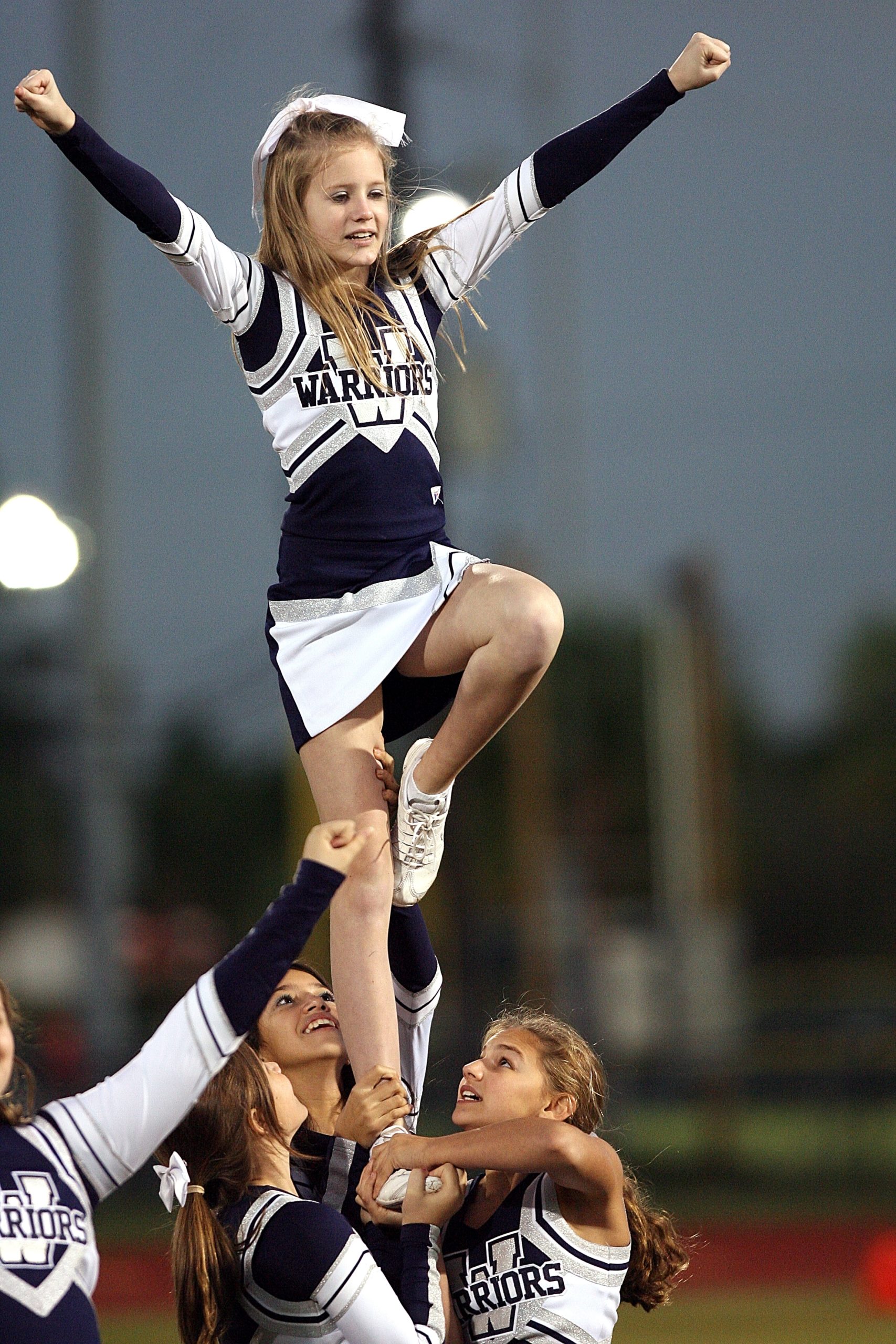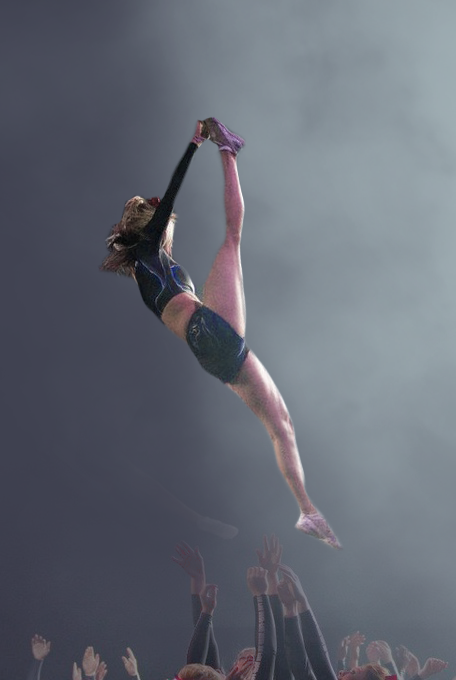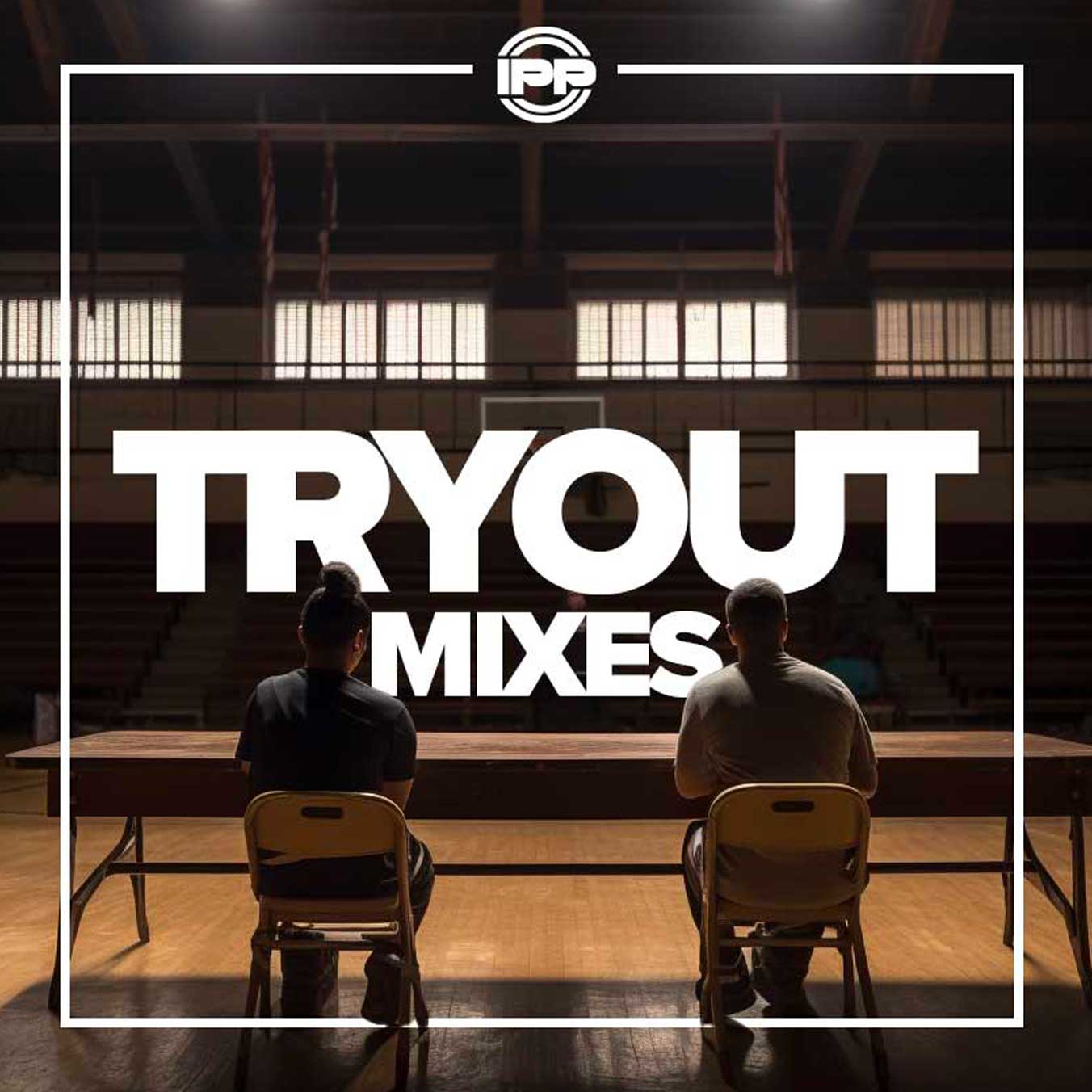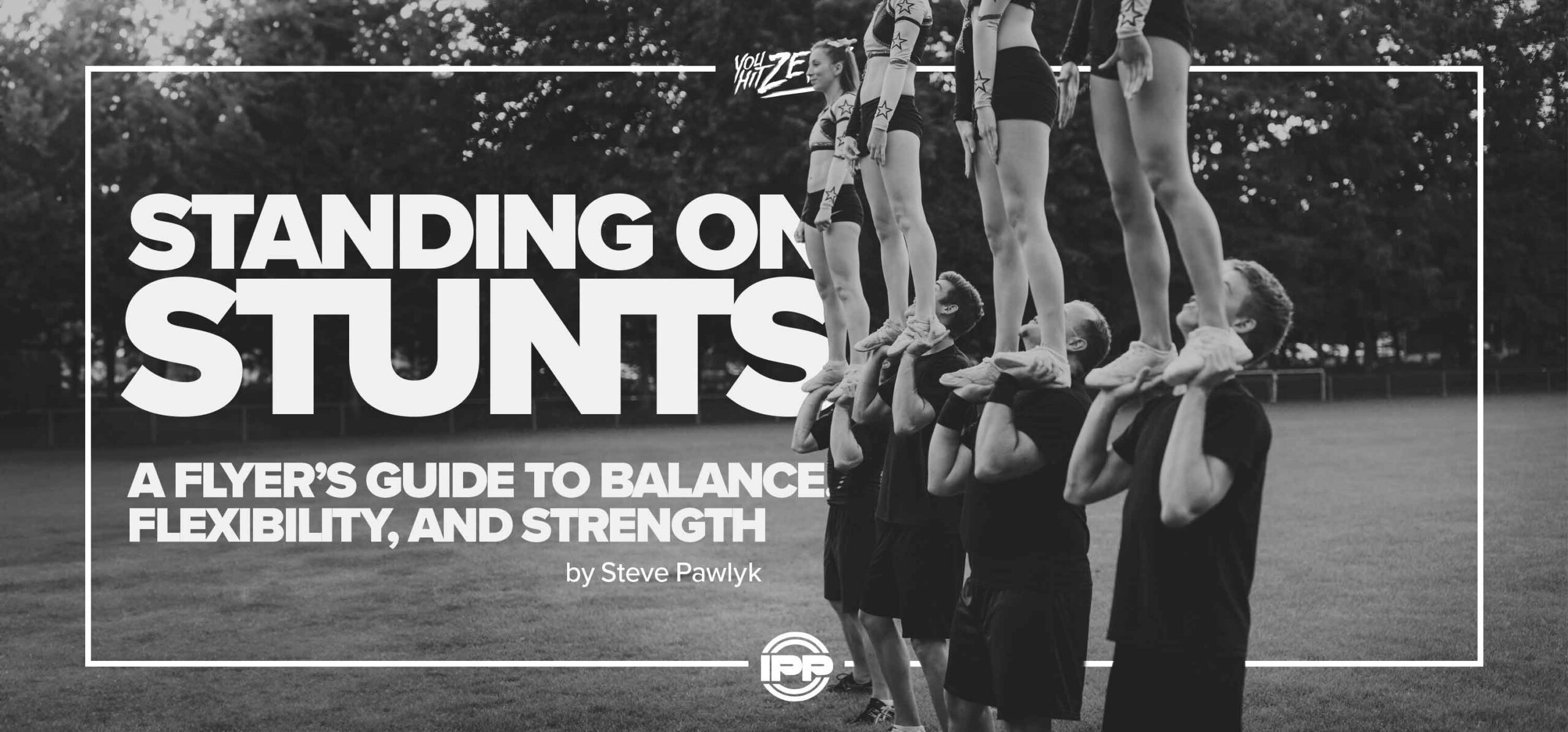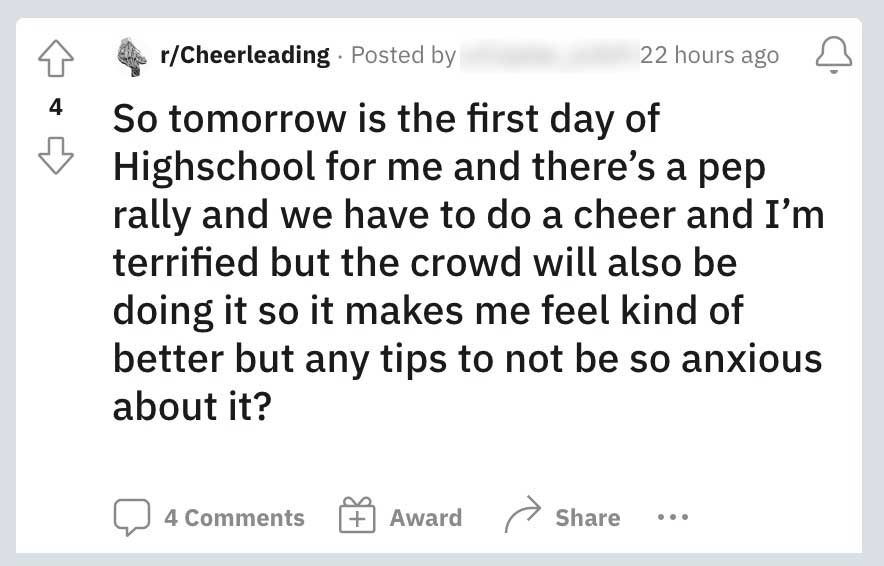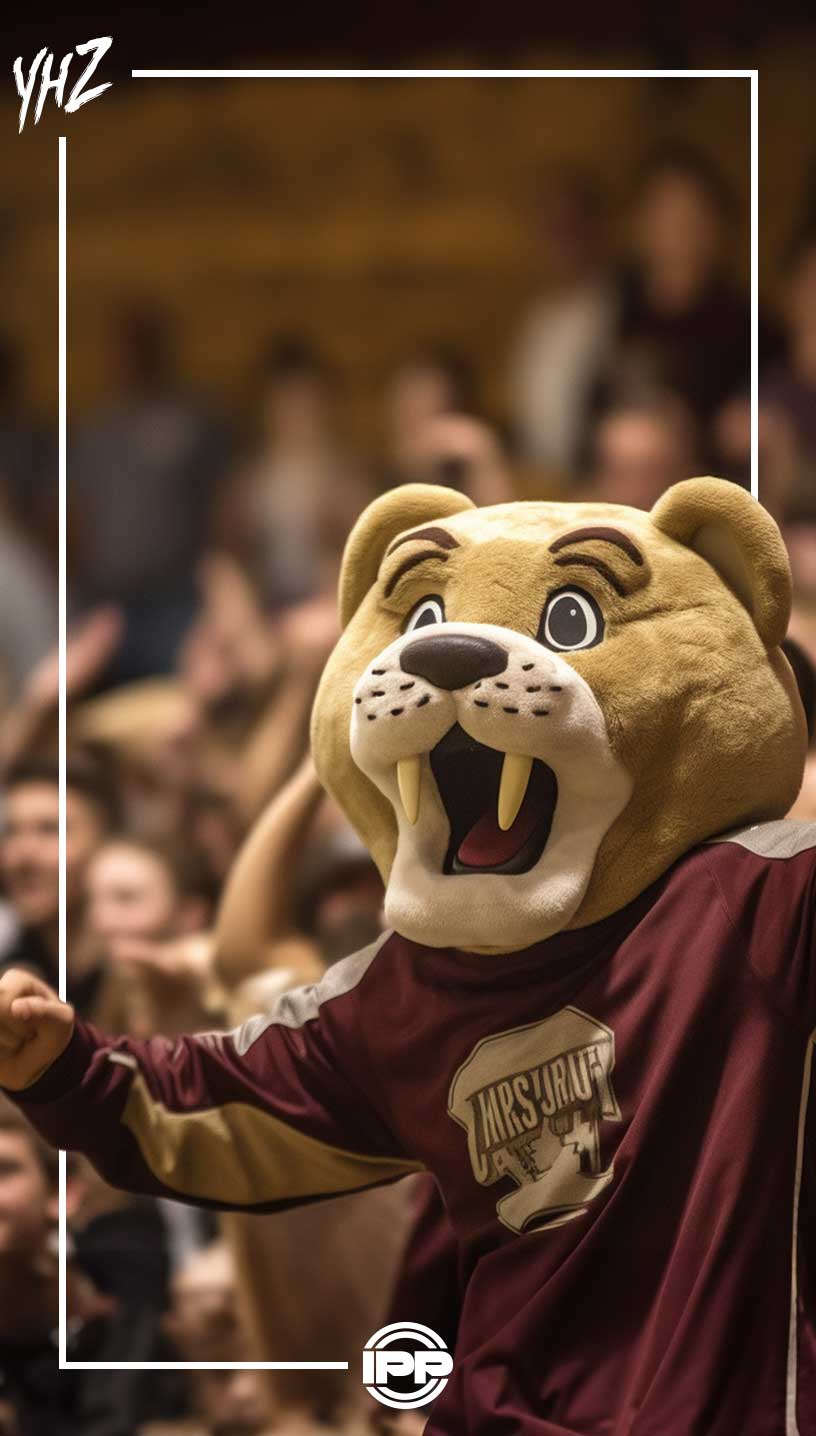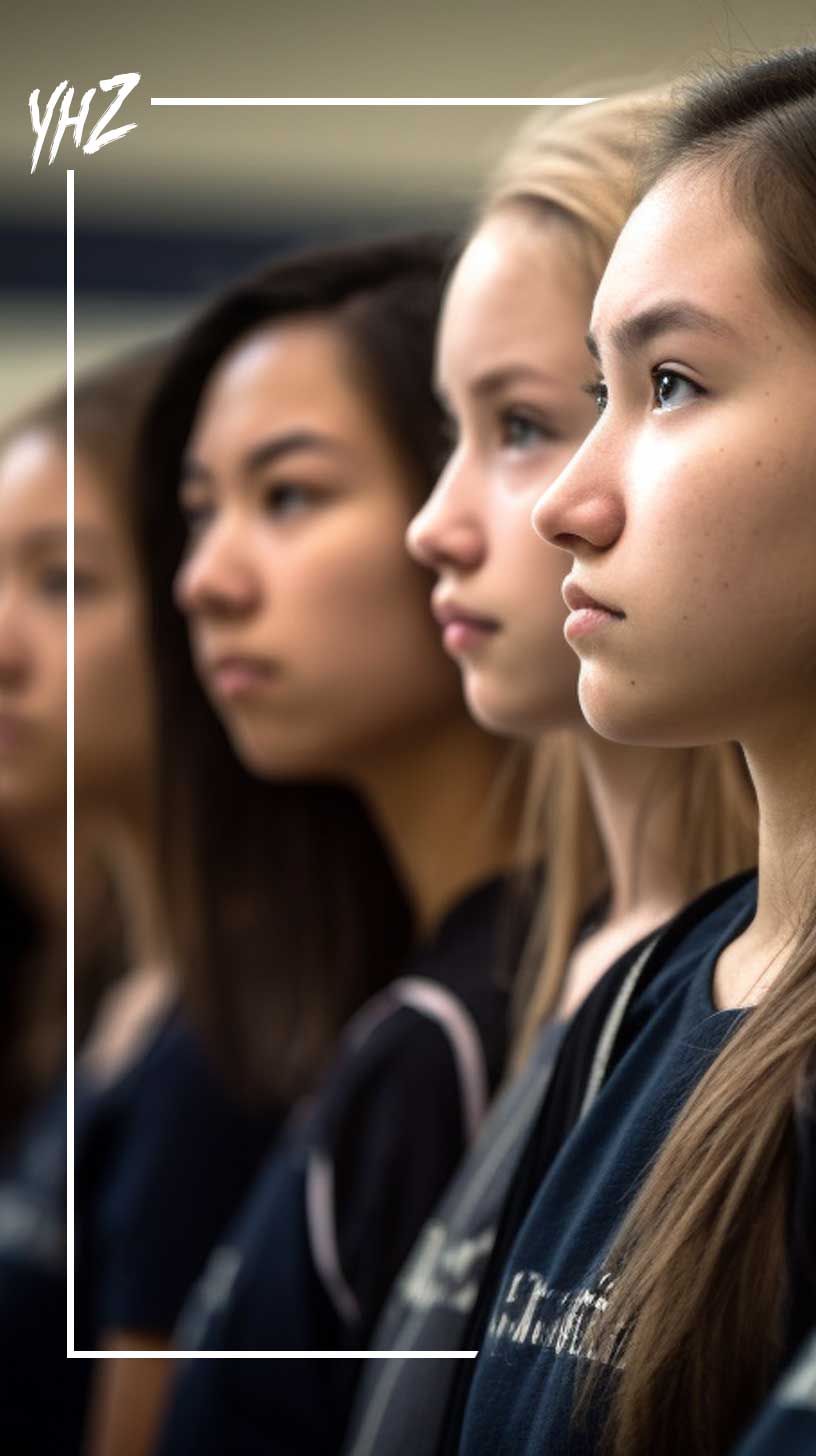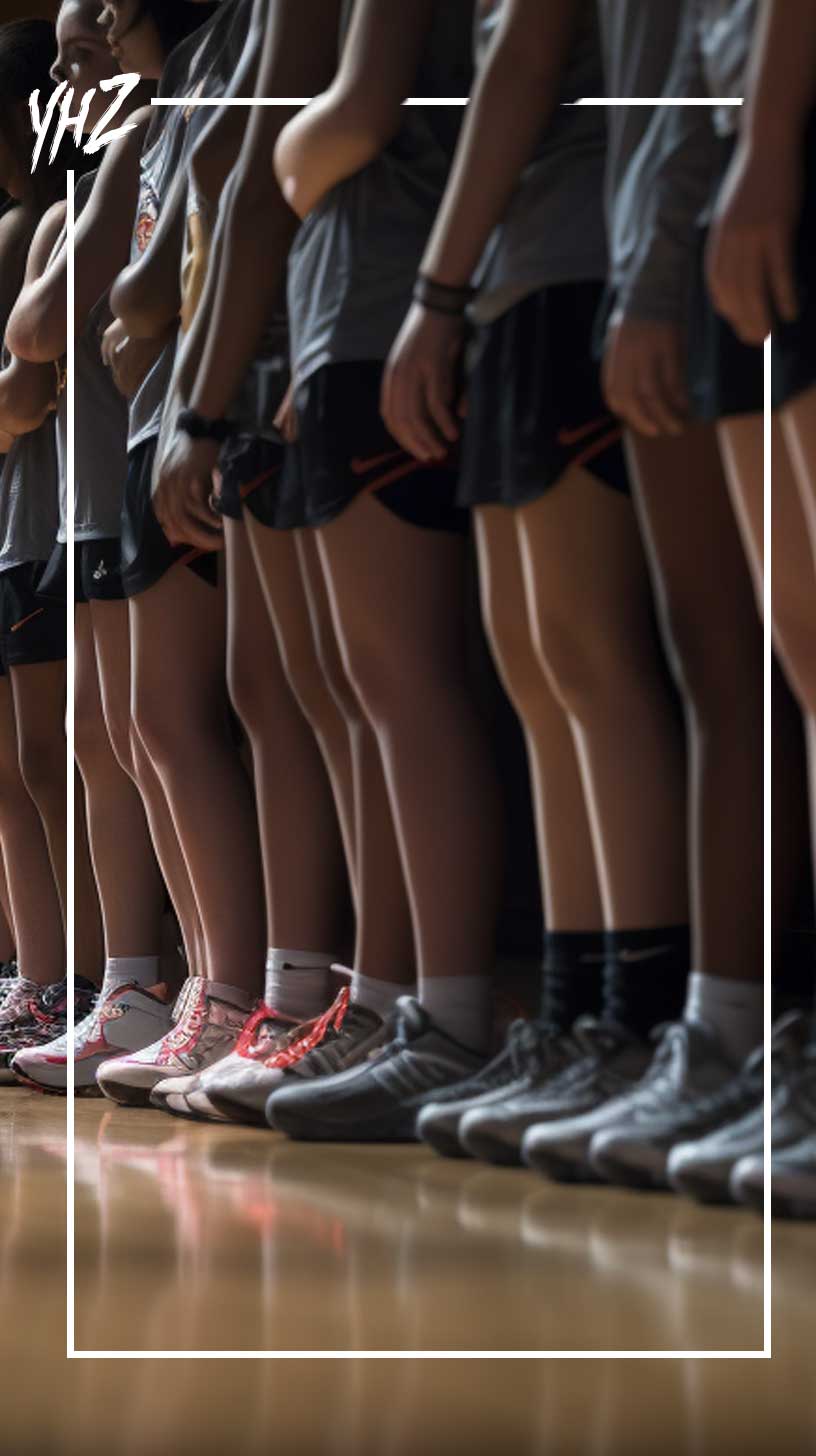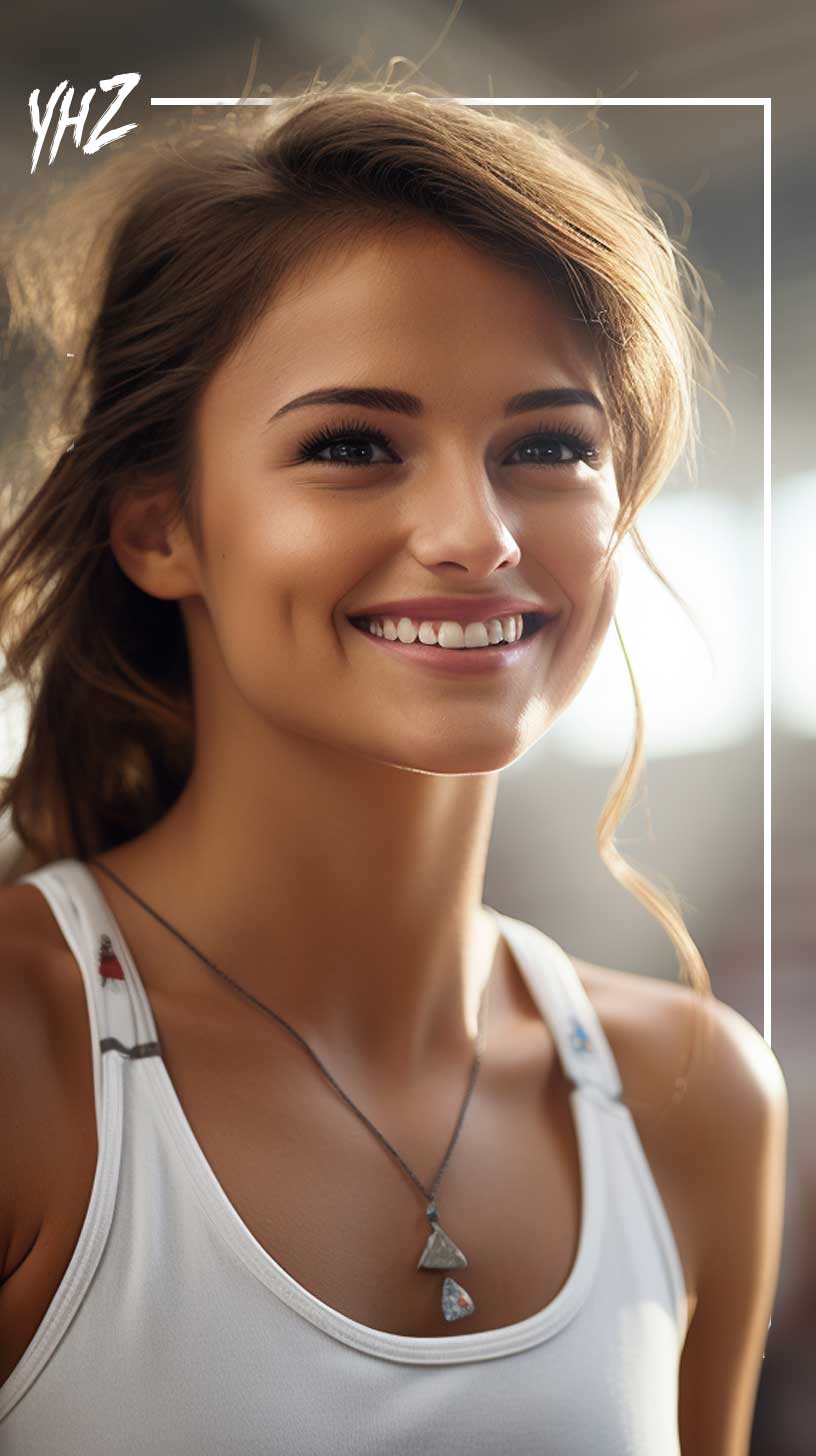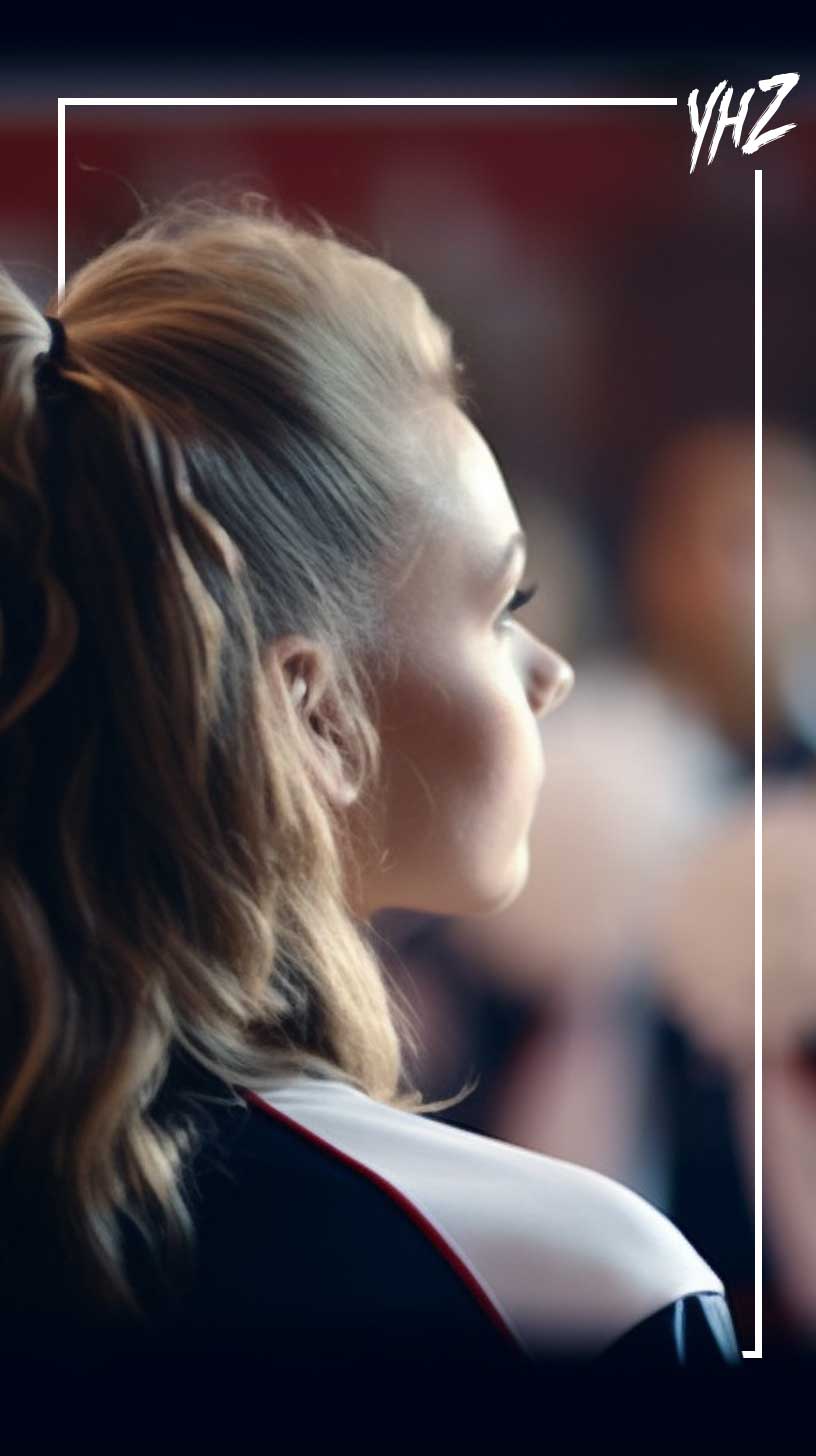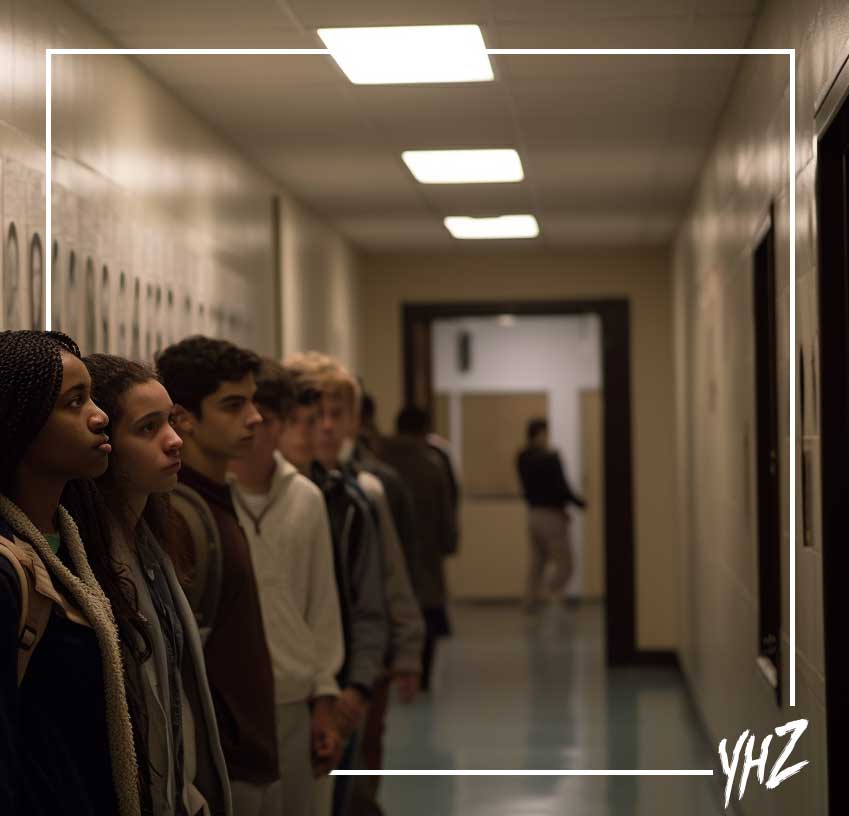By Steve Pawlyk
Published March 18, 2024
I came across a post on the r/cheerleading subreddit yesterday from user u/zimzamzoom01. It illustrates how the role of a flyer is filled with challenges that require not just physical agility but a blend of mental fortitude, precise technique, and a supportive environment. Today let’s discuss how to equip flyers with strategies to enhance their skills, prevent injuries, and foster a supportive cheer program.
Foundation: Strength, Flexibility, and Balance
Hip Flexibility and Mobility: The agility of your hips plays a significant role in the execution of stunts, enabling smoother transitions into various positions. Exercises like dynamic stretches, hip openers, and controlled leg swings can significantly improve your range of motion. This increased flexibility aids in achieving higher kicks and splits, which are often required in complex stunts.
Leg Strength and Control: While core and ankle strengths are foundational, the power in your legs cannot be overstated. Strong legs contribute to explosive jumps and secure landings, essential elements in cheerleading. Squats, lunges, and plyometric exercises are effective in building this strength. Additionally, practicing techniques such as toe raises can enhance control during stunts, providing a firmer grip on your base’s hands or shoulders.
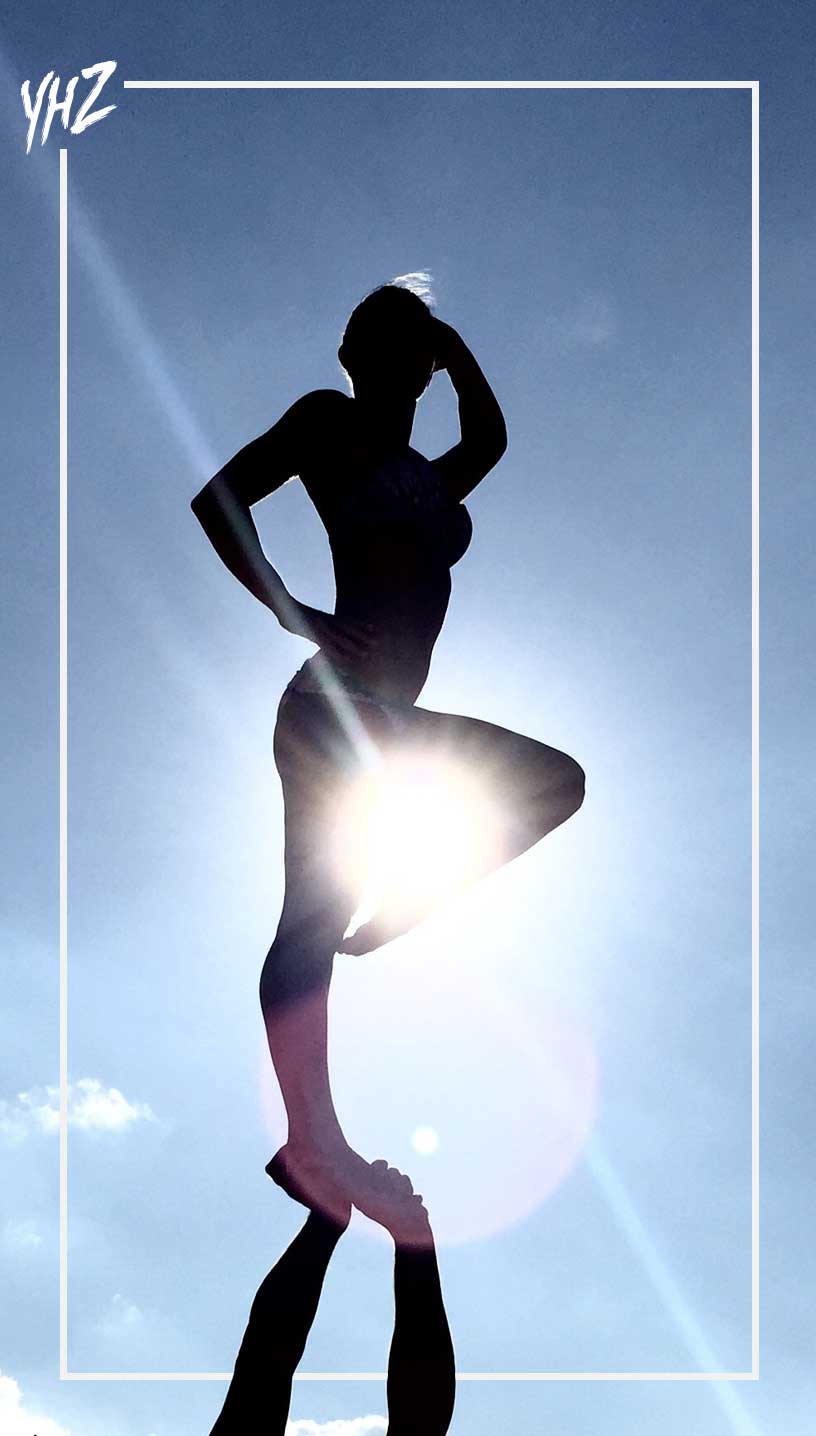
Mental Balance and Focus: The mental aspect of balance is just as important as the physical. A flyer must possess the ability to focus amidst the chaos of performances and competitions. Techniques such as meditation and visualization can train your mind to remain calm and centered. Focusing on breathing can also help maintain mental balance, allowing for better concentration and execution of stunts.
Proprioceptive Development: Beyond basic balance exercises, engaging in activities that challenge your proprioceptive abilities can lead to significant improvements in how you control your body in space. This can include more advanced yoga poses that require both concentration and physical prowess, or even activities like slacklining, which demand a high level of body awareness and control.
Incorporating Movement Patterns: Practice doesn’t just make perfect; it makes permanent. Incorporating movement patterns that mimic the dynamics of stunts into your training can enhance muscle memory. This includes drills that simulate the lifting, twisting, and holding phases of stunts, ensuring that your body is well-acquainted with the motions even before you take to the air.
Technique:
Engage Your Base: Ensure full foot contact with your bases’ hands. Engage your legs and distribute your weight evenly, providing a stable platform for your bases to support you.
Tighten and Elongate: Imagine pulling your body towards the sky, engaging every muscle from your core down to your toes. A tightened body is easier and safer to lift and hold.
Safety: Techniques & Trust
Balancing Techniques: Develop impeccable balance through exercises tailored for flyers. Practice on solid ground before taking these positions into the air, focusing on building muscle memory for positions like the liberty and arabesque.
Nutrition, Recovery, and Mental Preparation
Nutritional Support: A balanced diet fuels your body for strength and recovery. Focus on proteins, carbohydrates, and healthy fats, alongside hydration to maintain peak performance.
Rest and Recovery: Incorporate rest days and recovery techniques into your training regimen. This not only prevents injuries but also ensures you’re always performing at your best.
Mental Strength and Visualization: Employ mindfulness and visualization techniques to enhance focus, reduce performance anxiety, and mentally prepare for routines.
Additional Safety Measures
Protective Gear: Utilize wrist guards, ankle braces, and mats during practice to minimize injury risks, ensuring a safer learning and practice environment.
Balancing Safety: When in the air, focus on techniques such as locking your knees and not attempting to balance yourself. Trust your bases to provide balance and concentrate on keeping your feet flat and stable.
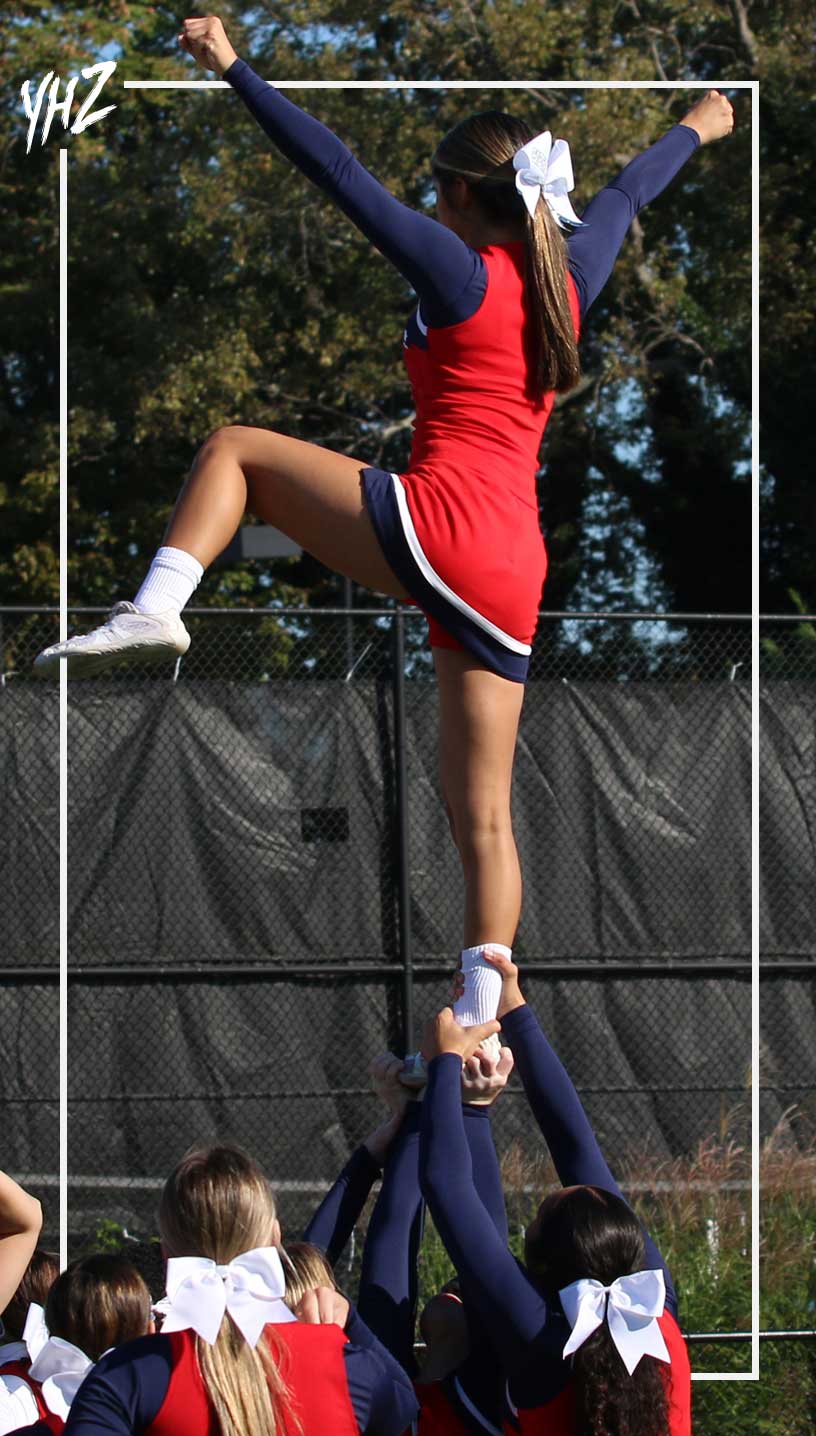
Mental Resilience and Visualization
Mindfulness and Breathing: Practice mindfulness and breathing exercises to manage performance anxiety. This mental preparation can significantly improve focus and calmness during routines.
Communication and Trust
Build a Relationship with Your Bases: Effective communication is crucial. Trust and understanding between you and your bases can significantly improve performance and safety.
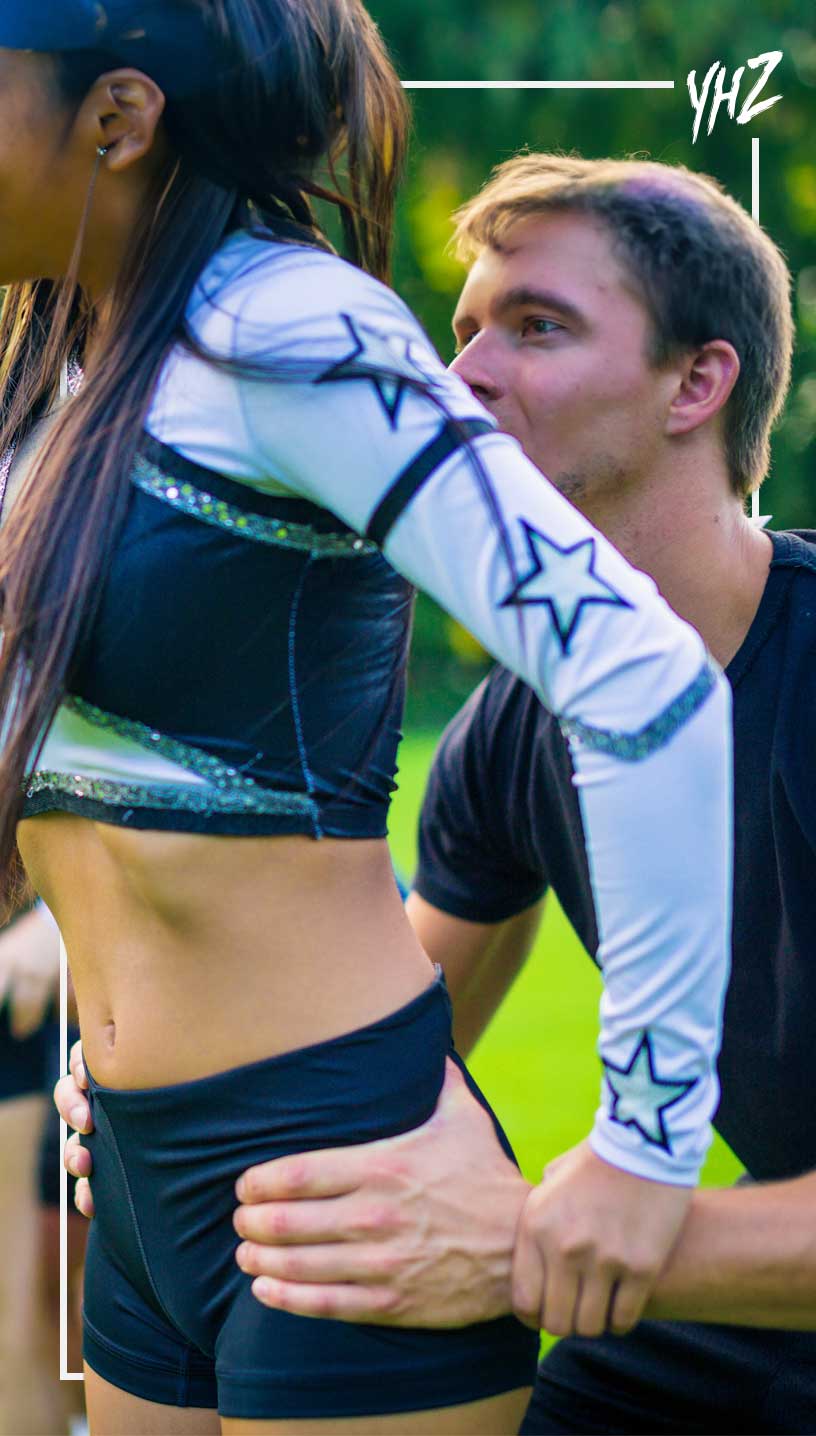
Stability Strategies
Focus Point: Choose a fixed point in the distance to maintain balance. This technique helps reduce distractions and enhances stability.
Progressive Learning: Start with simpler stunts and gradually progress to more complex ones. This approach ensures a solid mastery of fundamental skills.
Engaging the Community
Community Engagement: The cheerleading community is a valuable resource. Share experiences, seek advice, and engage in workshops or coaching sessions for continuous improvement.
Tailored Training and Professional Coaching: Regular feedback from experienced coaches and tailored exercises for your skill level are essential for refining technique and enhancing safety practices.
Tailored Training
Exercises by Skill Level: Tailor your training to match your experience level. Beginners should focus on foundational exercises, while advanced flyers can explore more complex training routines to refine their skills.
Persistence and Progress
Success Stories for Motivation: Read and share success stories of underdog teams like Ithaca College, Team Australia, and Bangkok University, which have made significant impacts on the world stage despite facing numerous challenges. These teams’ stories highlight resilience, creativity, and the power of teamwork, proving that with determination, any squad can achieve greatness. Their journeys from facing significant obstacles to emerging as champions are truly inspirational and serve as powerful reminders of what can be accomplished through hard work and unity. For more about their inspiring journeys, check out our article on underdog cheer teams that shocked the world.
So now you got all the tips and tricks you’ll need to nail your technique, stay safe, get your head in the game, and boost your confidence as a flyer 😊. Just remember, it’s all about keeping cool, staying patient, and keeping at it. Every time you practice, you’re one step closer to hitting zero.
IPP's Premade Mixes are USA Cheer Compliant and customizable! Add Sound FX, swap songs, & more! Add your Team Name to the mix for only $10!

